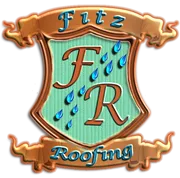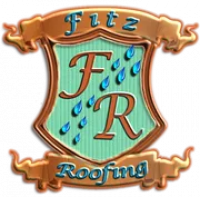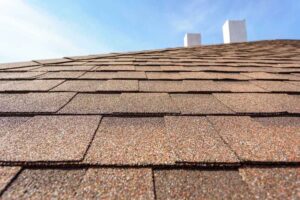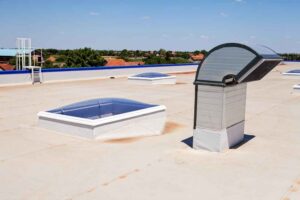
Storms can cause significant damage to your roof and other nearby structures. As a result, many questions arise about prevention measures and steps to take when your roof faces storm damage. This blog answers three such questions.
1. What Kinds of Damage Do Storms Cause to Roofs?
Often, roofs suffer damage after storms because of water and wind exposure. Discover three problems that a storm may cause to your roof.
Gutter Problems
Strong winds that blow amidst storms can sweep debris into your gutters. The blockage reduces your gutters’ ability to direct water from your house. As a result, moisture gets trapped under your shingles and causes leakage. More water could also leach at the base of your premises and cause foundational problems. High winds may also knock gutters loose.
Shingle Damage
Wind and hail could cause your shingles to lose granules, lift, curl, crease, or crack. Sometimes, a piece or multiple pieces of shingles may be missing, in which case your roof may leak. Also, you will need a prompt repair or replacement when you notice cracks in the shingles. Otherwise, the cracks compromise your shingle’s structural integrity.
Water Damage in the Attic
Roof damage that exposes your attic to the exterior atmosphere increases the likelihood of moisture damage to your attic. Often, signs of water damage start in your attic and then proceed to the ceiling of your top floor. Your attic’s rafters, too, are designed to be straight, but moisture causes the rafters to warp and get surface damage.
2. Which Roofing Material Best Withstands Storm Damage?
Many roof types are available on the market, each with a different storm resistance ability. The three top choices are metal, wood shakes, and slate.
Metallic Roofs
Metal is one of the most secure, durable, and wind-resistant roof choices. Such roofs last for decades and survive significant hail impact. Metallic roofs also withstand wind speeds of up to 160 mph. Of course, you might have to pay a little more for metal roofs, but the investment is worth the longevity.
Wood Shakes
Wood shake roofs are made from split logs and boast high wind resistance. Aesthetics are also a plus if you opt for wood shakes. But, unfortunately, you will need more maintenance to enhance the beauty and durability of wood shakes than you would need on other roof materials.
Slate
Made from a network of stone slabs, slate roofs usually have a greater weight and high durability. The heavy weight of the stone slabs ensures the winds do not blow off your shingles. Slates also have a slick surface that does not give snow any traction, so ice slides off before your roof faces moisture-related damage.
3. Does Home Insurance Cover Roof Storm Damage?
Whether insurance covers roof damage depends on your policy. Many insurance plans usually cover hail, wind, destruction from falling objects, and interior damage caused by roof storm damage. For instance, if the storm destroys your roof and rainwater damages the ceiling, your insurance will cover the roof and ceiling.
You should follow the appropriate procedure for your home insurance to reimburse the damage. First, gather tangible evidence, such as pictures of hailstones and damaged properties. A claim representative usually assesses the harm caused. But, if you need emergency services, find a qualified professional. Then, document the damage before the repair or replacement starts.
The contractor you choose also impacts the claim process. Opt for one who is licensed and insured so that you get the appropriate documentation. You could do background checks or look up potential contractors on the Better Business Bureau (BBB). Otherwise, you may have to pay for any other damage to your roof during the repair if you work with an uninsured contractor.
If you need roofers with an A+ rating from the BBB in Nashville, TN, or Houston, TX, do not hesitate to contact Fitz Roofing. Your storm-damaged roof will receive excellent inspections, repairs, and replacements.




